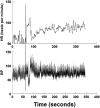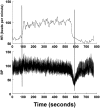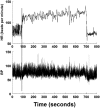Pediatric Disorders of Orthostatic Intolerance
- PMID: 29222399
- PMCID: PMC5744271
- DOI: 10.1542/peds.2017-1673
Pediatric Disorders of Orthostatic Intolerance
Abstract
Orthostatic intolerance (OI), having difficulty tolerating an upright posture because of symptoms or signs that abate when returned to supine, is common in pediatrics. For example, ∼40% of people faint during their lives, half of whom faint during adolescence, and the peak age for first faint is 15 years. Because of this, we describe the most common forms of OI in pediatrics and distinguish between chronic and acute OI. These common forms of OI include initial orthostatic hypotension (which is a frequently seen benign condition in youngsters), true orthostatic hypotension (both neurogenic and nonneurogenic), vasovagal syncope, and postural tachycardia syndrome. We also describe the influences of chronic bed rest and rapid weight loss as aggravating factors and causes of OI. Presenting signs and symptoms are discussed as well as patient evaluation and testing modalities. Putative causes of OI, such as gravitational and exercise deconditioning, immune-mediated disease, mast cell activation, and central hypovolemia, are described as well as frequent comorbidities, such as joint hypermobility, anxiety, and gastrointestinal issues. The medical management of OI is considered, which includes both nonpharmacologic and pharmacologic approaches. Finally, we discuss the prognosis and long-term implications of OI and indicate future directions for research and patient management.
Copyright © 2018 by the American Academy of Pediatrics.
Conflict of interest statement
POTENTIAL CONFLICT OF INTEREST: Dr Boris has served as a paid expert witness on the subject of postural orthostatic tachycardia syndrome. H. Lundbeck A/S (which underwrote a meeting of the Pediatric Subgroup of the American Autonomic Society) produces Northera (droxidopa) to treat orthostatic intolerance as well as citalopram and escitalopram; the other authors have indicated they have no potential conflicts of interest to disclose.
Figures




References
-
- Freeman R, Wieling W, Axelrod FB, et al. . Consensus statement on the definition of orthostatic hypotension, neurally mediated syncope and the postural tachycardia syndrome. Clin Auton Res. 2011;21(2):69–72 - PubMed
-
- Wieling W, Schatz IJ. The consensus statement on the definition of orthostatic hypotension: a revisit after 13 years. J Hypertens. 2009;27(5):935–938 - PubMed
-
- Jarjour IT. Postural tachycardia syndrome in children and adolescents. Semin Pediatr Neurol. 2013;20(1):18–26 - PubMed
Publication types
MeSH terms
Grants and funding
LinkOut - more resources
Full Text Sources
Other Literature Sources
Medical
Molecular Biology Databases

